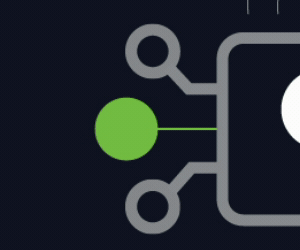The term “honeypot” has its origins in the world of espionage, but these days, the digital version of a honeypot has become a useful cybersecurity tool. Cyber honeypots attract hackers by mimicking legitimate targets such as servers, databases, websites or applications.
“These systems are intentionally configured to appear vulnerable to lure adversaries. Once cybercriminals interact with the honeypot, the security team can monitor their behavior, gather intelligence about their methods and tools, and use this information to strengthen defenses or divert them from critical assets,” says Ram Chandra Sachan, an independent researcher and co-author of the 2024 paper “AI-Driven Adaptive Honeypots for Dynamic Cyber Threats."
Since the emergence of honeypots in the 1980s, these decoy systems have evolved and are now pivotal to enhancing cybersecurity defenses. But a new and improved version is on the rise: the AI-enhanced honeypot.
Click the banner below for a few security strategies that promote cyber resilience.
“Using data sets of attacker-generated commands and responses, these models are trained to mimic server behaviors convincingly. Techniques such as supervised fine-tuning, prompt engineering and low-rank adaptations help tailor these models for specific tasks,” explains Hakan T. Otal, a doctoral student in the University at Albany, SUNY’s Department of Information Science.
AI-powered honeypots leverage advances in natural language processing and machine learning, such as fine-tuned large language models (LLMs), to create highly interactive and realistic systems.
EXPLORE: The anatomy of a phishing attack and how to navigate this security scenario.
Pros and Cons of AI Honeypots
Boosting a honeypot with AI enables dynamic and realistic interactions with attackers, improving the quality of the data collected. Models can evolve to respond to emerging attack tactics through reinforcement.
Sachan points out that creating AI honeypots can also result in faster deployment; drastic reductions in deployment costs; and more realistic and highly convincing honeypots that mimic real network activity, traffic patterns and logs. Leveraging AI for honeypot maintenance can lead to more accurate threat detection and the evolution of honeypots based on new attack methods, making them more difficult for hackers to identify.
But AI-powered honeypots also present challenges, including static behaviors and predictable patterns that make it easier for attackers to detect them, Otal says.
Moreover, while deployment costs may be reduced, the tuning and maintenance of AI models requires a significant investment in hardware, software and licenses, as well as a bench of skilled AI professionals.
1983
The year of the first recorded attempt to lure hackers into a cyber honeypot
Source: metallic.io, “Honeypots: A walk down memory lane,” July 7, 2021
What Can Businesses Do Now in Lieu of AI-Powered Honeypots?
Until budgets allow for the deployment of sophisticated AI-enhanced honeypots, Otal recommends organizations focus on foundational cybersecurity measures to prevent data theft, including:
- Network security tools. Ensure firewalls, intrusion detection systems and endpoint protection platforms are running and up to date.
- Data encryption. Secure data through robust encryption methods.
- Regular updates and patching. Keep systems and software updated to mitigate vulnerabilities.
- Backup systems. Implement regular, secure backups to ensure data recovery after an incident.
It’s also important to train staff to recognize phishing attempts and practice good cyber hygiene. “Any security systems are only as strong as their weakest link,” Sachan says. AI-enhanced honeypots could play a key role in future security strategies as enterprises continue to improve and upgrade their technology and as the integration of LLMs yields a more adaptive and sophisticated security infrastructure.











